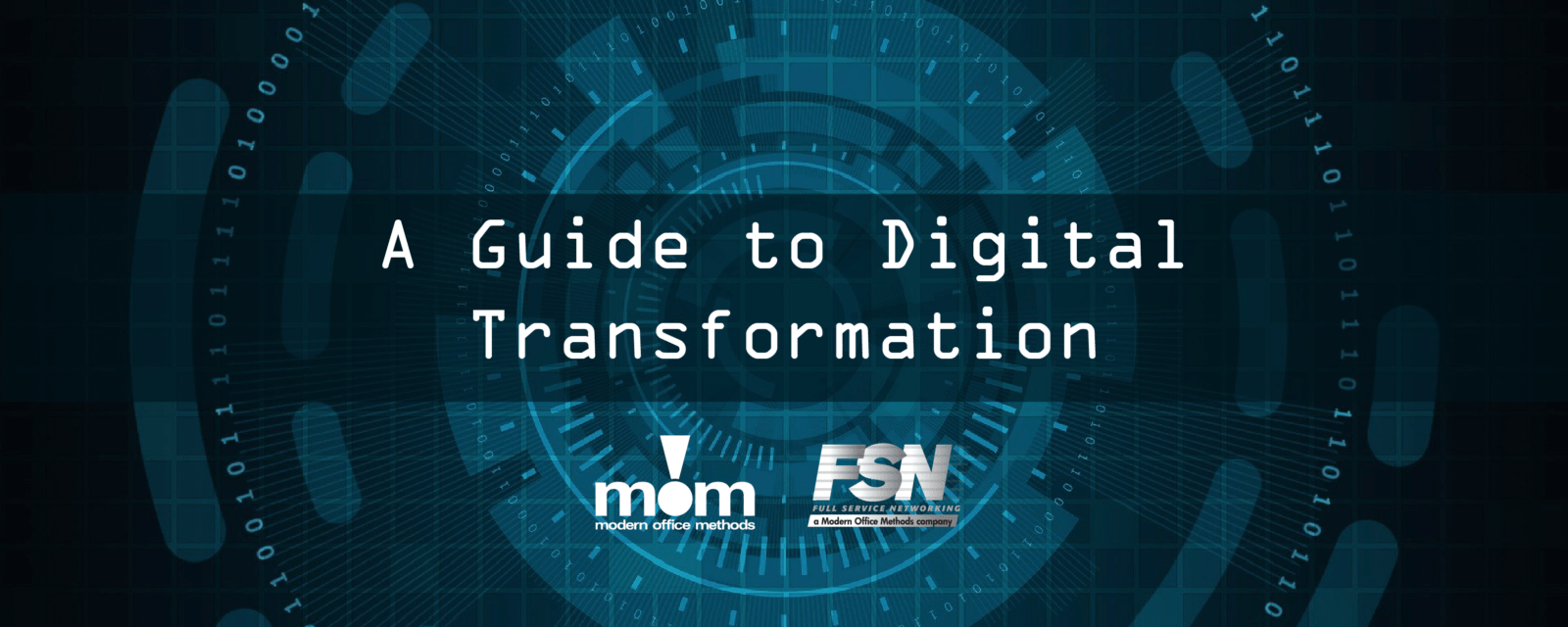The popularity of the phrase, “digital transformation” has quickly grown in the last decade. As we enter the 2020’s, this phrase is only going to become more important. We think it’s safe to say that no one saw that start to 2020 that we’re all experiencing. Most of us are working remotely or from home. Zoom meetings and Google Hangouts have become the new normal for communicating with coworkers and clients. But what does the “digital transformation” actually mean? No matter the size of your business, why is it important to transform digitally? What are you or could you be doing to become more digitally transformed? Adaptation is key…especially during today’s uncertain times and the need to equip your newly mobile workforce.
Here is what digital transformation means. It is the integration of digital technology into all areas of your business, changing the operating structure of your business, and delivering higher-level, competitive value to your customers. Harnessing digital technology and directing its beneficial effects appropriately and wisely can assist in the following areas.
- Improve overall operations.
- Make your business more competitive.
- Help you comply with business and government regulations.
- Secure your business information more effectively…from the office to the home offices.
Since the 1980s, the mass introduction and subsequent cost reductions of digital technology let businesses embrace the use of the internet, desktop and laptop computers, cell phones and other digital devices to create, capture and digitally store information necessary for business. While the paperless office has not yet fully come into existence, customer records, supplier invoices, legal documents, employee records, business communications and more have been digitized. During the past decade, the world achieved the capability to store virtually all information digitally. Data from the internet of things (IoT) needs capturing, storing and analyzing, adding more reasons for businesses to undergo digital transformation.
While digital transformation is multifaceted, managing the vast amount of digital information your business now has is a critical starting point. Recently, Canon U.S.A. Inc. released a whitepaper titled “Information Revolution” that provides some guidance on best practices to begin a digital transformation journey. Along with data from the Canon Lean Information Management and Governance Study, the paper applies the concept of “lean thinking” to business information management.
Valuable insights are gained by properly managing and accessing your digital information. You can find opportunities to better meet customer expectations, automate inefficient workstreams, and identify security gaps to better protect your business data. Yet, according to Canon’s study, 64% of executives reported that their organizations must wait for information and 63% said they get excessive information or over-documentation. In other words, they don’t get the right information at the right time or they get a “data dump” that isn’t valuable to any decision-making actions.
Over the past 30 years, lean thinking has been used to improve manufacturing processes by mapping the flow of materials and how workers interact with those flows to create processes that produce higher quality products faster, more efficiently and at less cost. That same lean thinking can be applied to business information flows and workstreams in the office.
Mapping the flow of information into and out of your business, and identifying who sends, receives, stores, modifies and acts upon the information is a key step in digital transformation. This locates bottlenecks, stretches of inefficient waiting time, duplication of efforts and areas of security and compliance gaps. You can then redesign and automate workstreams to be more efficient and better meet all critical requirements. By gaining control of the digital information you create and receive in your business you will be able to analyze it, ensure the right information is getting to the right people at the right time and begin to transform your business into a digitally powered business.
There are a variety of tools, solutions, and services available that enable you to incorporate the lean thinking approach to the capture, management, distribution and security of information flows in your business. These include:
- Multifunctional devices (MFDs) to digitize and intelligently capture information from paper documents.
- Information management software solutions that can capture information anywhere and any way it enters your business (paper, email, PDF, audio, video, CAD, etc.), automate workflows, store, and implement information governance so you have the right information at the right time.
- Dashboards that give views of workstreams, processes such as accounts receivable or accounts payable and other data to help you run your business more efficiently.
- Cloud solutions for ubiquitous and secure availability of business information.
- Professional services experts to assist in workstream mapping, security and compliance audits, solution implementation and continuous improvement.
Working with the right partner that provides these solutions will help you get started developing a digitally transformed business based on lean information management practices. Feel free to contact the Modern Office Methods and Full Service Networking teams for more information.


Leave A Comment
You must be logged in to post a comment.